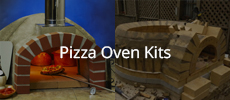Originally posted by gjbingham
View Post
If you're not seeing any tilt in the vent walls, then I would guess the weight of the arch and vent is probably not the real problem.
I'm going to go out and look at mine. I haven't noticed any cracks yet. Maybe I'm just not looking hard enough.
 ) With that much heat, mass and mortar, something has to give somewhere.
) With that much heat, mass and mortar, something has to give somewhere.







Leave a comment: